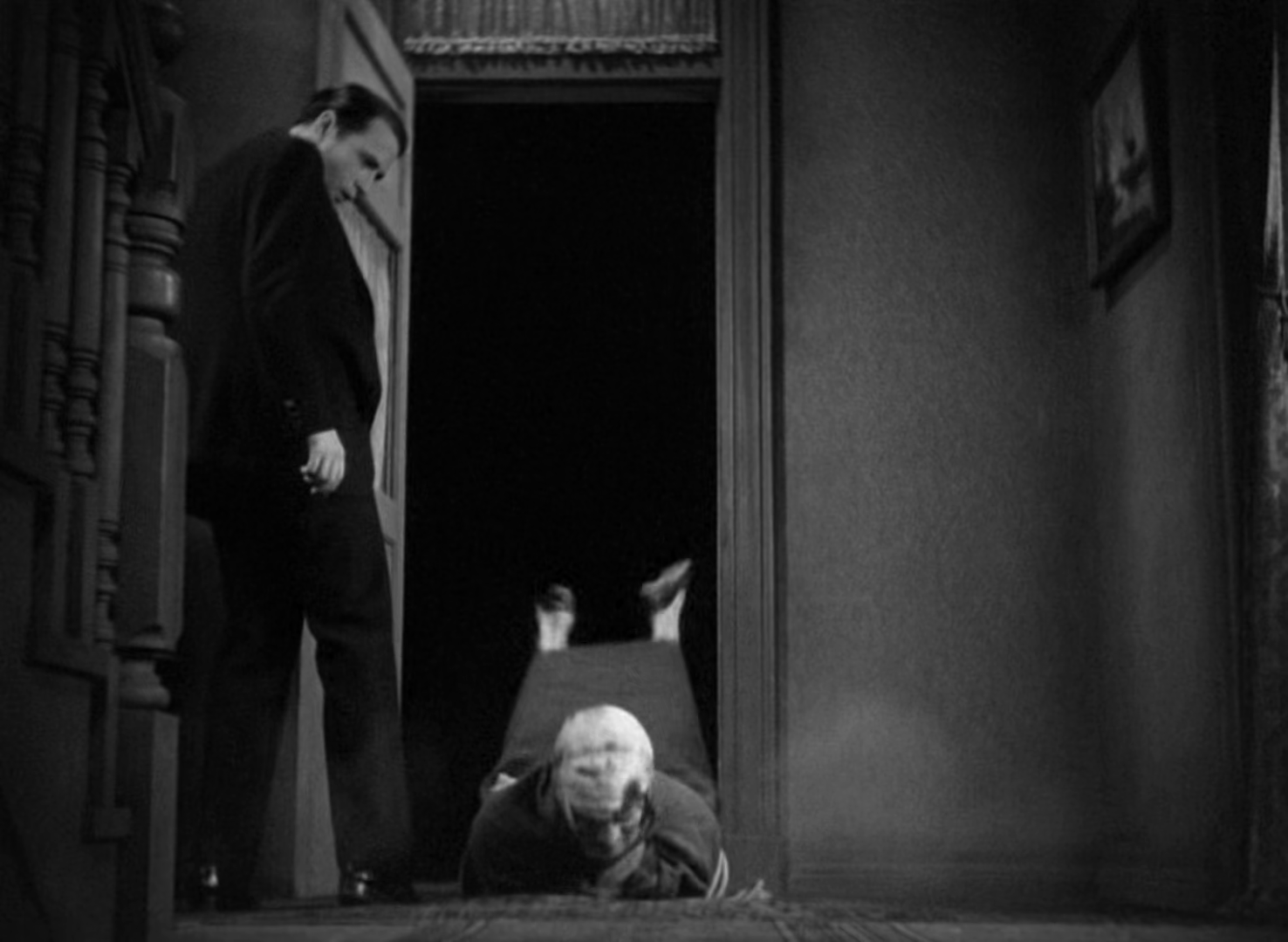[THE CHALK-OUTLINE]
The Public Enemy (1931): Breakdown by The Hestinator (Brandon)
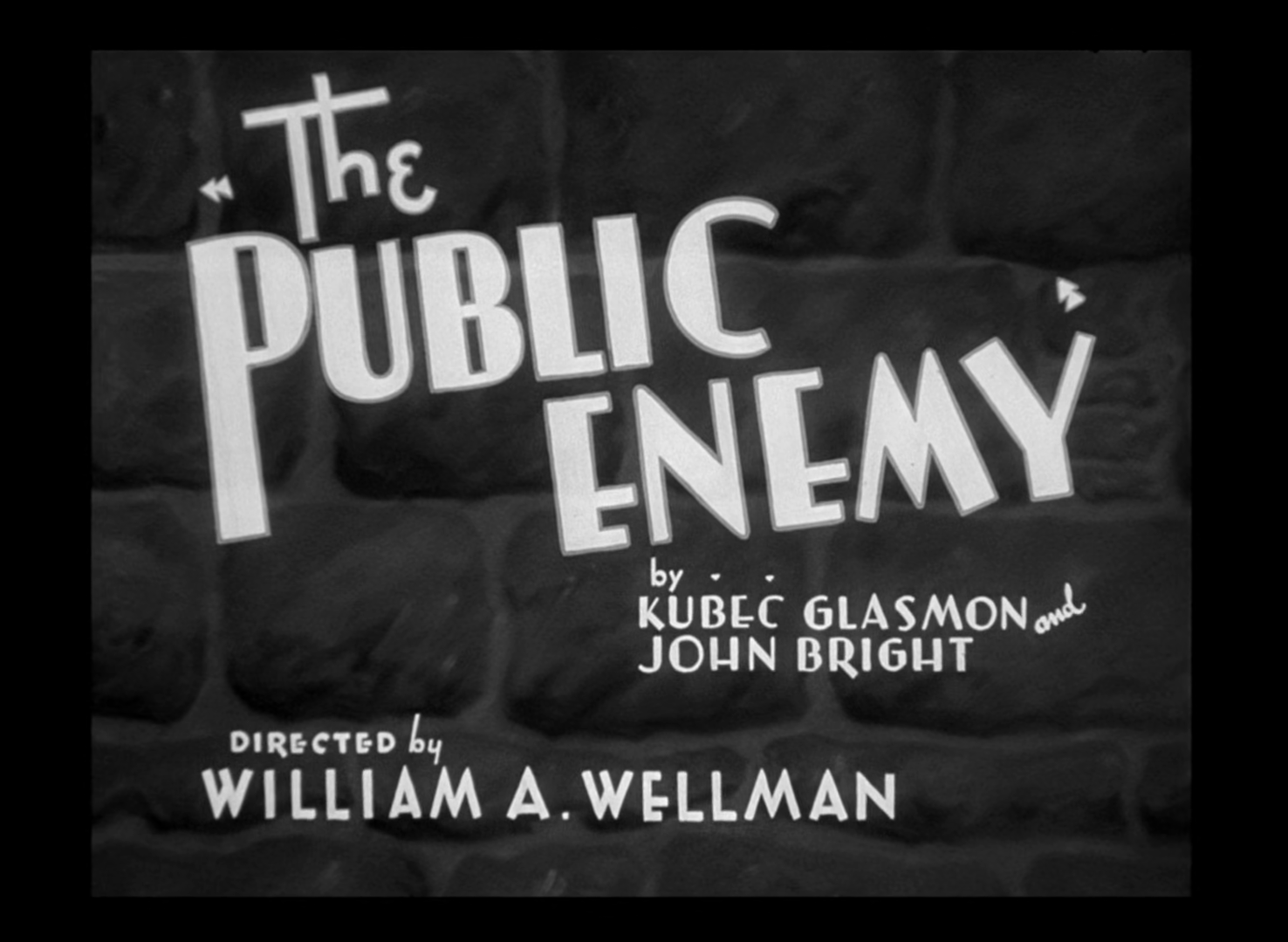
A small-time crook becomes a mob enforcer in the early days of Prohibition.
[THE GOOD, THE BAD, AND THEIR BADASSITUDE]
The Villains:
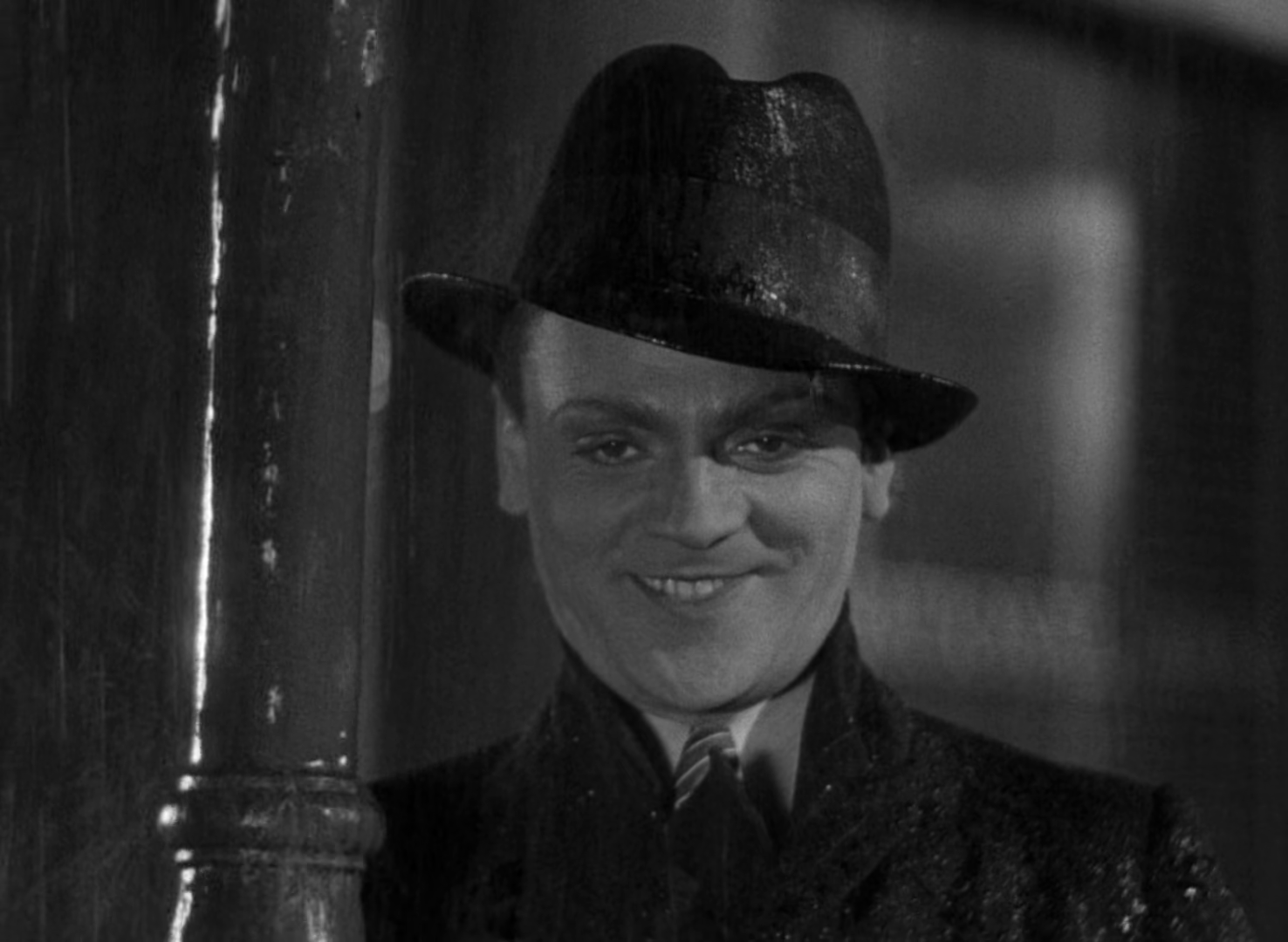
James Cagney as Tom Powers (a.k.a. “Tommy Boy”)
Gangster movie. Baddies come first.
This was the breakout role for now-iconic actor James Cagney, and he wasn’t originally supposed to have the part. At first, Edward Woods was going to play Tom Powers, and Cagney was to portray Matt Doyle, the best friend character. This can be seen somewhat in the childhood scenes at the beginning of the movie, where the kid playing young Tom Powers (Frank Coghlan Jr.) sort of looks like Edward Woods, and the one playing young Matt Doyle (Frankie Darro) looks more like James Cagney. Of course, director William A. Wellman (who had previously helmed the excellent World War I aviation epic Wings [1927]), saw that Cagney was the one who could actually act and switched the actors’ roles.
Tom Powers is a thuggish lout who steals random, piddly shit to sell on the black market and gets sucked into the gangster lifestyle when Prohibition (the ban on the sale of the alcohol) hits the United States. Being borderline-psychopathic, he enjoys his new job as a mob enforcer a little too much. As good with a grapefruit as he is with a “gat” (yes, that word is used to refer to firearms here on at least one occasion), Tom lives his own perverse version of the American Dream. He’s gutter trash that made it big.
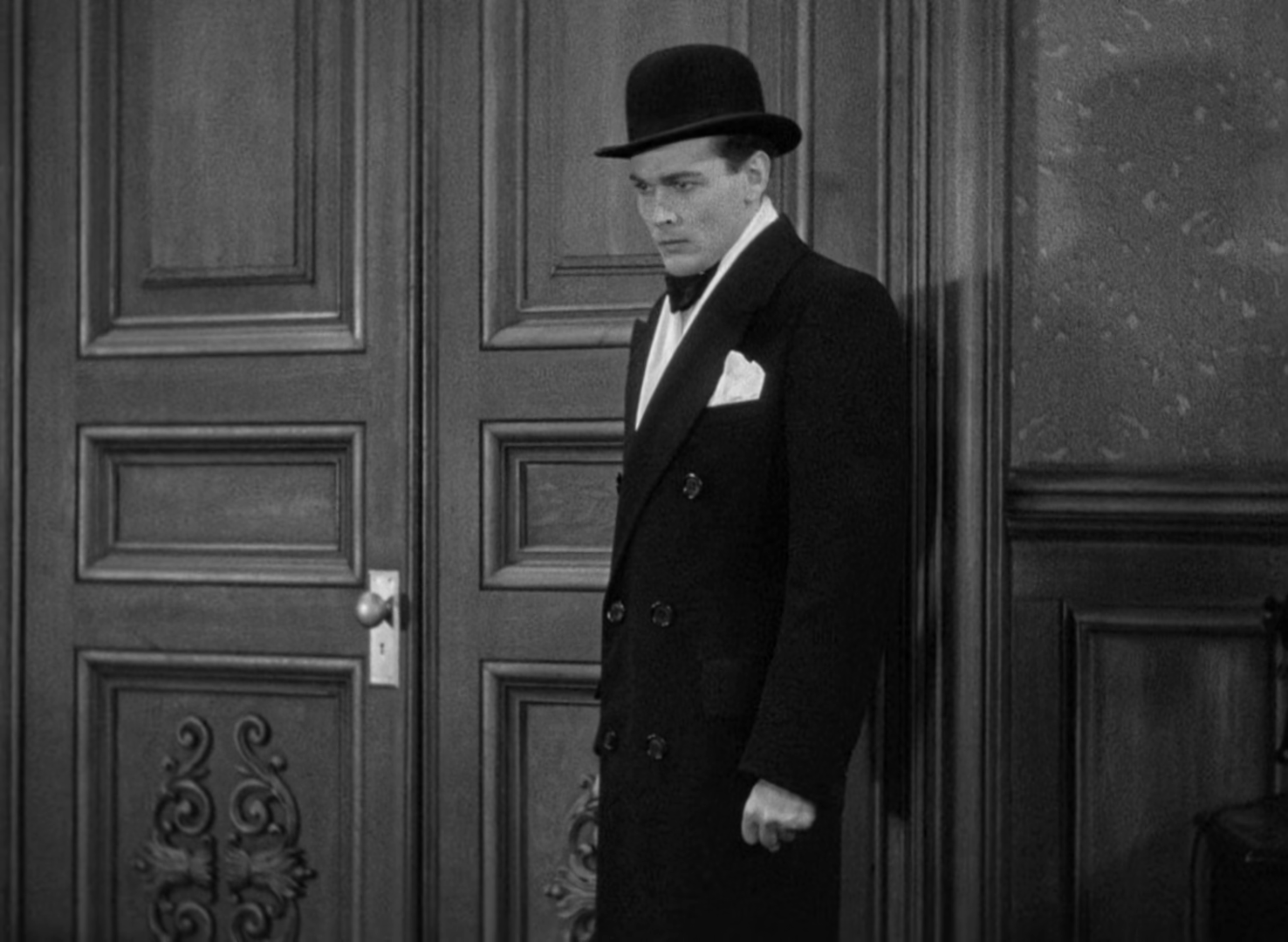
Edward Woods as Matt Doyle
Tom Powers’ best friend is Matt Doyle, a somewhat reluctant follower into gangland. He’s a lot nicer than Tom (which isn’t saying much), but he’s still trapped neck-deep in the life of a mob “foot soldier.” Unlike Tom, he’s into stable relationships, falling in love with Mamie (Joan Blondell), even if there’s some unfinished business that he and Tom must attend to on his wedding night. He may be gentler than your typical ruffian in organized crime, but he still ends up eating concrete like the rest of them.

Robert Emmett O’Connor as Paddy Ryan
Paddy Ryan is the local mob boss who takes Tom Powers and Matt Doyle in under his wings. His rivalry with fellow booze baron “Schemer” Burns is threatening to turn into all-out gang war. There’s not too much to report here, other than the way he eats that popcorn or peanuts or whatever the Hell it is. He’s just scarfing away at that shit, letting morsels fall out of his mouth into the container again. That, sure as Hell, ain’t sanitary.
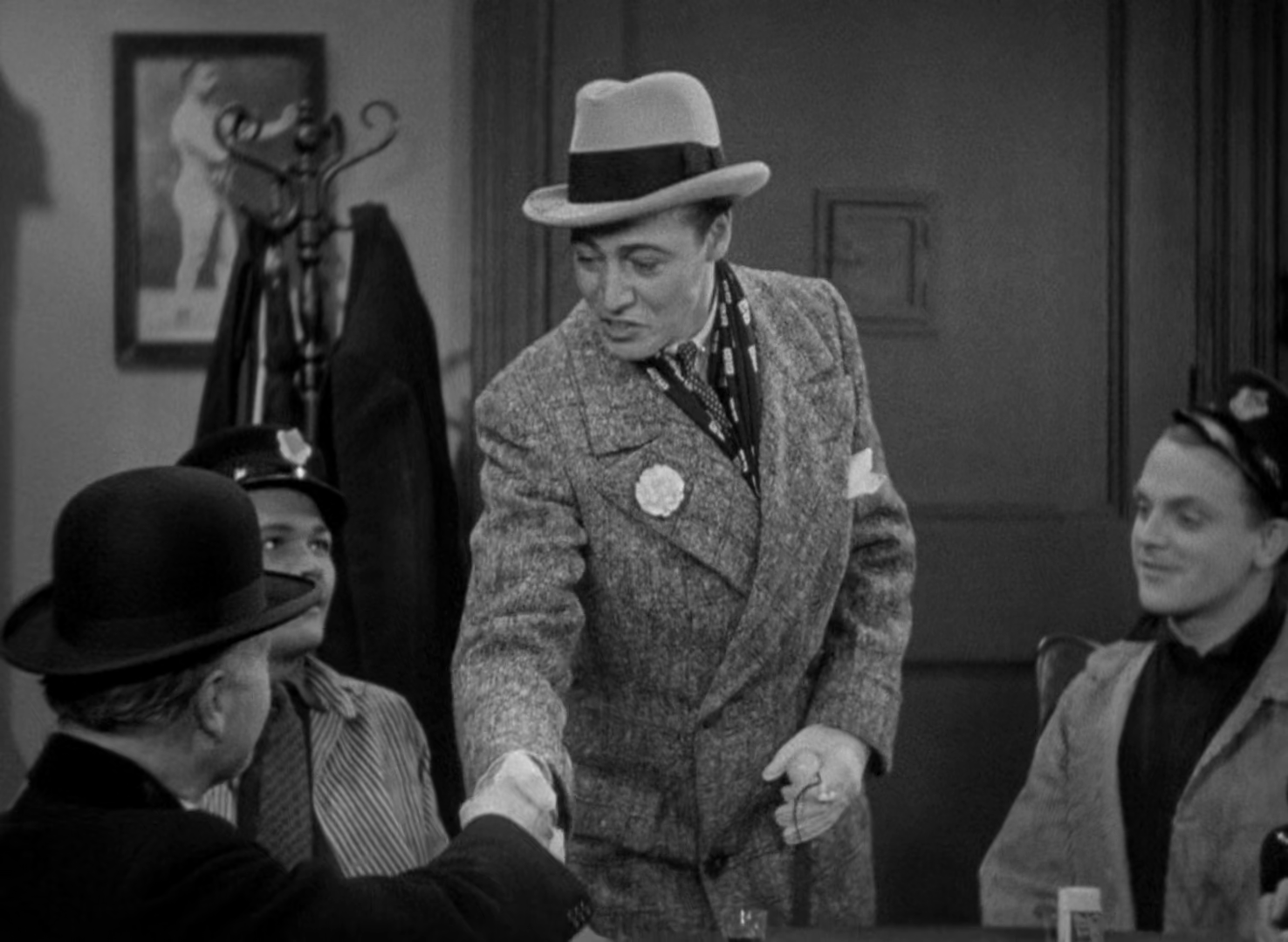
Leslie Fenton as Samuel “Nails” Nathan
Everybody in this movie’s universe seems to have heard of “Nails” Nathan, supposedly one of the toughest sons-of-bitches to ever be a mobster. To be honest, he comes across as a bit of a pretty boy, thanks to be being played by Leslie Fenton. He’s so manly that he gets killed by a bucking horse (named “Rajah”) completely offscreen. Prior to his unceremonious demise, he unites his men with the gang led by Paddy Ryan.
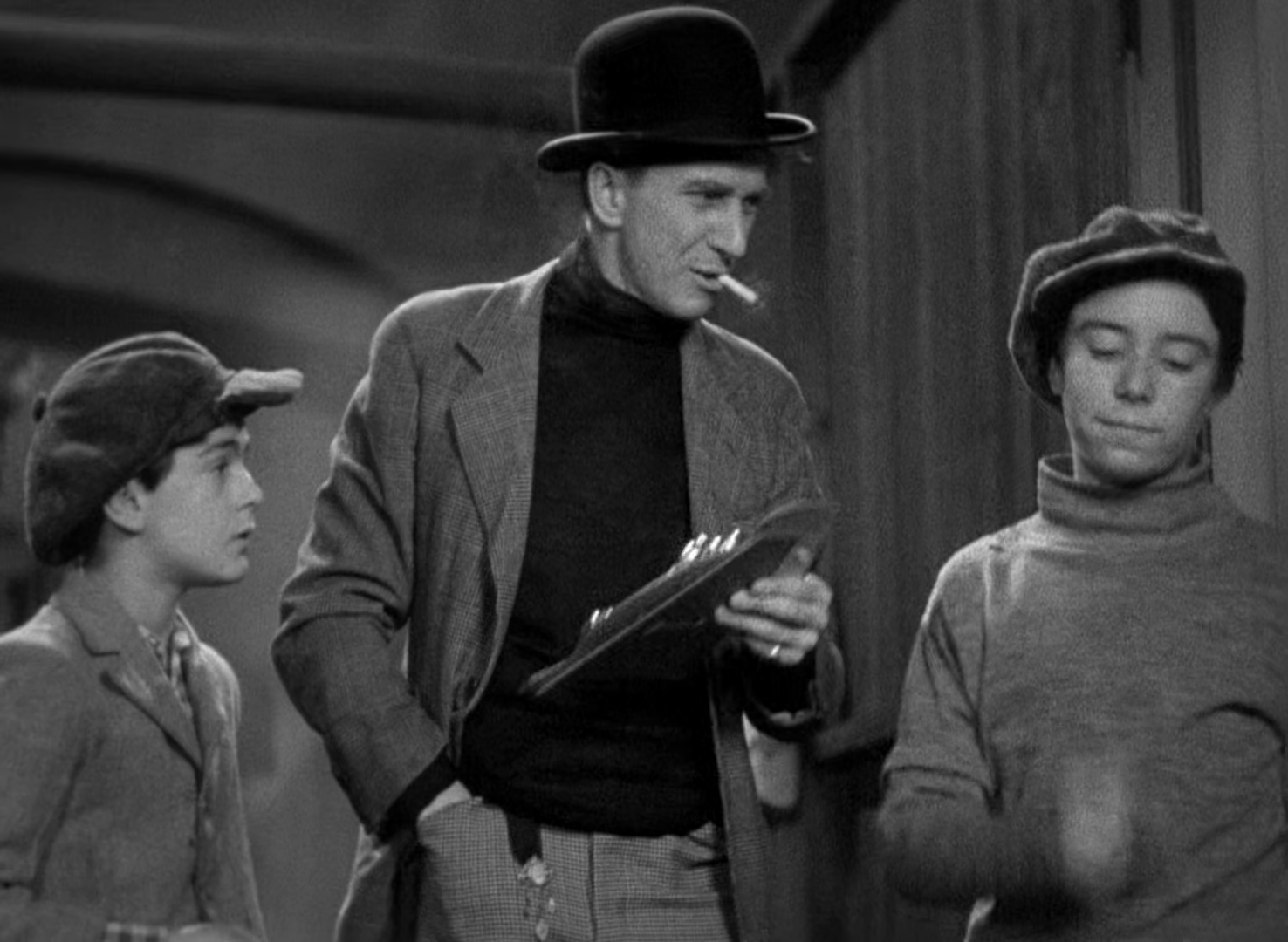
Murray Kinnell as Putty Nose
The oddly-named Putty Nose (I’m assuming his parents didn’t name him that) is a low-tier crook who helps set Tom Powers and Matt Doyle on their paths to gangsterdom. He sells the crap that they steal off the streets and eventually recruits them for a fur warehouse heist. After that job goes South, with a copper pushing up daisies, he abandons Tom and Matt, but “justice” is coming…
The Heroes:
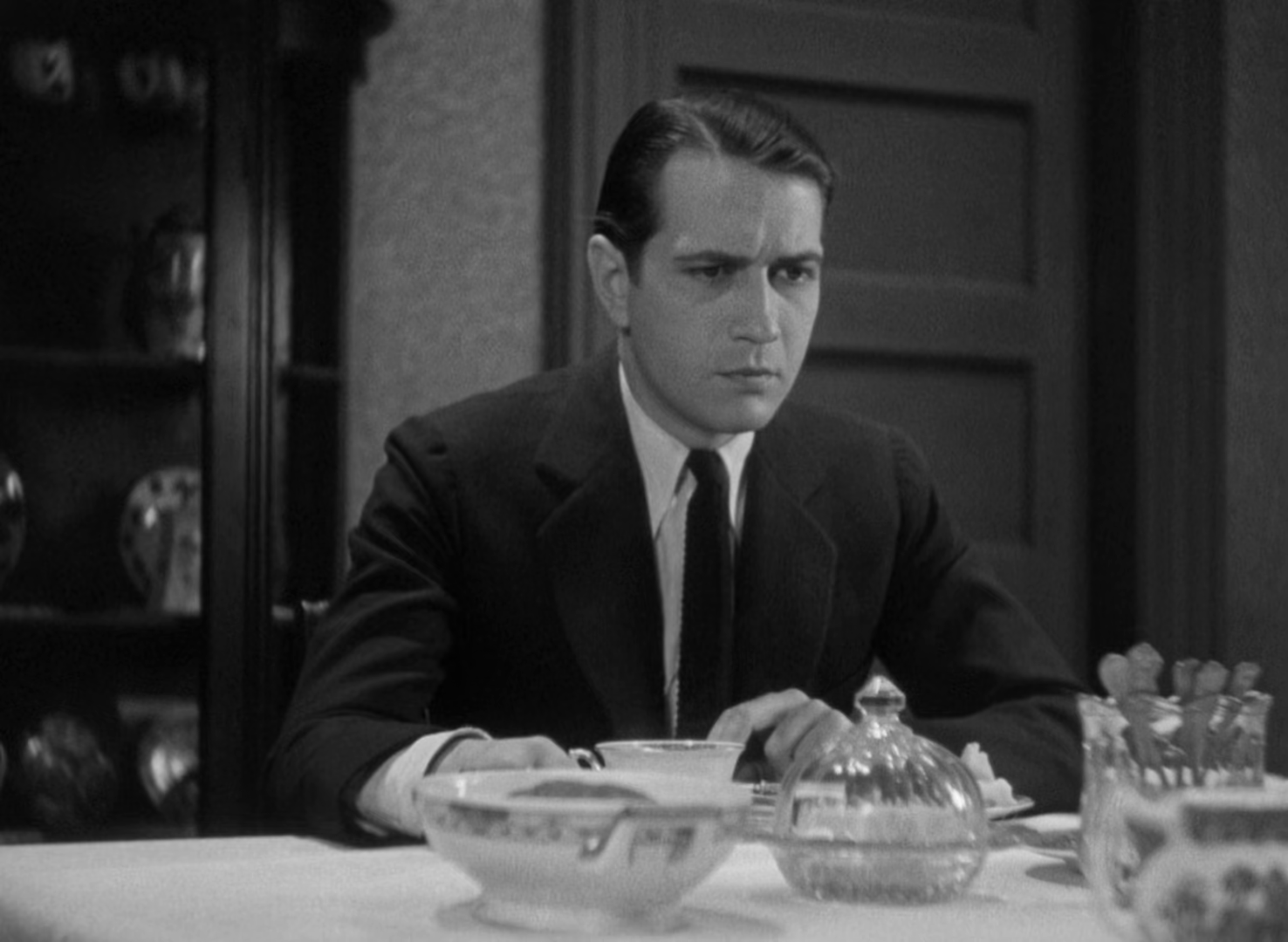
Donald Cook as Mike Powers
Nobody really comes across as a hero in The Public Enemy, but Tom’s older brother comes closest. Despite being more on the straight-and-narrow than his younger sibling, Mike Powers is still said to be a “nickel-snatcher,” stealing a little extra to pay the bills. Unlike Tom, he enthusiastically signs up to fight in World War I when the United States enters that conflict. He can make family gatherings a little awkward, though, with him throwing barrels around the dining room like he’s Donkey Kong or something.
[THE SEX AND VIOLENCE]
DUDESWEAT AND MACHISMO:

You’d think that the scene early on with Putty Nose sticking his ass in Tom Powers’ face would be the peak of dudesweat in The Public Enemy, but no, that part is soon topped. After a beer warehouse heist, Tom and Matt go to get new suits from a pair of gay tailors. A gay couple in an American movie from 1931? You better believe it! It’s one of the best scenes in the movie, even if it doesn’t have any gunplay (even though Tom seems a little weirded-out by one of the tailors putting his hands near his junk while measuring him).
EXPLOITATION AND MISOGYNY:

The Public Enemy contains one of the most iconic scenes of misogyny in movie history. You see, Tom Powers is starting to lose interest in his latest moll, Kitty (Mae Clarke). So, one breakfast he gets pissed and shoves a grapefruit in her face. Okay, it’s not exactly lethal carnage, but you just didn’t see that kind of stuff at the movie theater very often in 1931. It became infamous and was even spoofed in the episode “Brother from the Same Planet” on The Simpsons.
MURDER BY NUMBERS: [ 5 ]
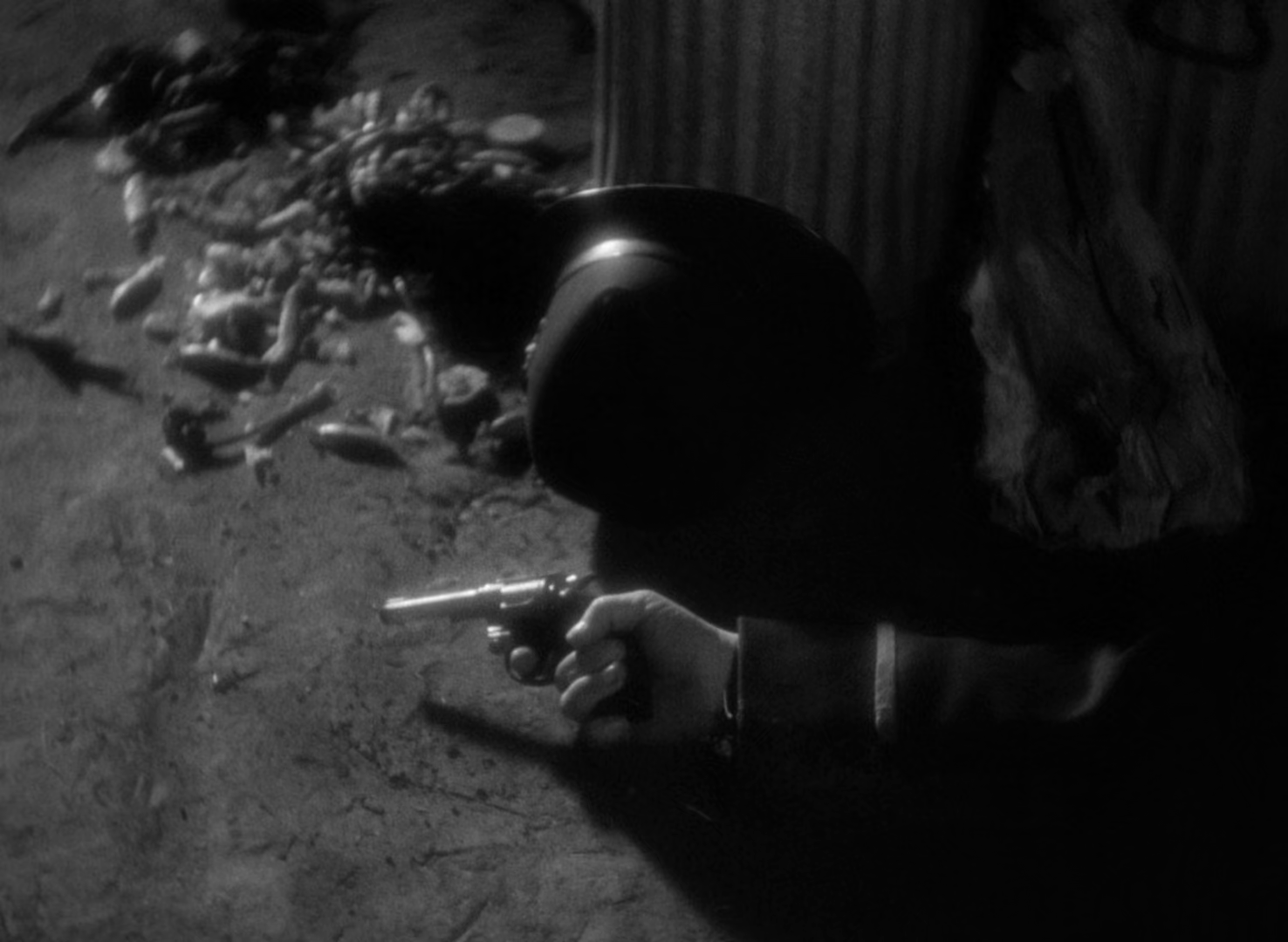
The number of fatalities in The Public Enemy is pretty damn low. During the fur warehouse heist, “Limpy” Larry Dalton gets capped by a police officer for loitering and the same copper gets shot by Tom and Matt. Putty Nose gets splattered on the piano he’s playing by Tom Powers, proving that revenge is a dish best served freezing cold. Matt is machine-gunned to death outside the gang’s safehouse. Tom’s murdered corpse is delivered to his family’s doorstep like a hunk of meat.
While fatal violence isn’t common, it is harsh and rough when it does show up. While Scarface (1932) has an exponentially higher body count, The Public Enemy probably has more blood and more impact from its violence. Perhaps the most shocking act of violence in the entire feature is when James Cagney gets raped. Yes, you heard that right… James Cagney gets raped in a 1931 film. While drunk, the wife/girlfriend of Paddy Ryan, Jane (Mia Marvin), sexually assaults the Cagnator offscreen.
Also, a horse gets shot and killed in an act of revenge.
MOST SATISFYING ASS-KICKING AND/OR DEATH:

Mike Powers is packing to go off to war, when his younger brother gives him a little too much lip, so he hauls off and punches Tom Powers, sending him flopping across the room and breaking a chair he lands in. It may sound like a pretty typical scene for an entry into the Badass Cinema canon, but, behind the scenes, it was an actual punch. The director, William A. Wellman, told Donald Cook to belt James Cagney for real, and – well – it sure was real, with Cagney breaking a tooth. Despite his dental issues, Cagney finished the scene in character. What a trooper!
[THE BEST OF THE REST]
EPIC MOMENT:
Matt’s Death and Tom’s Rampage
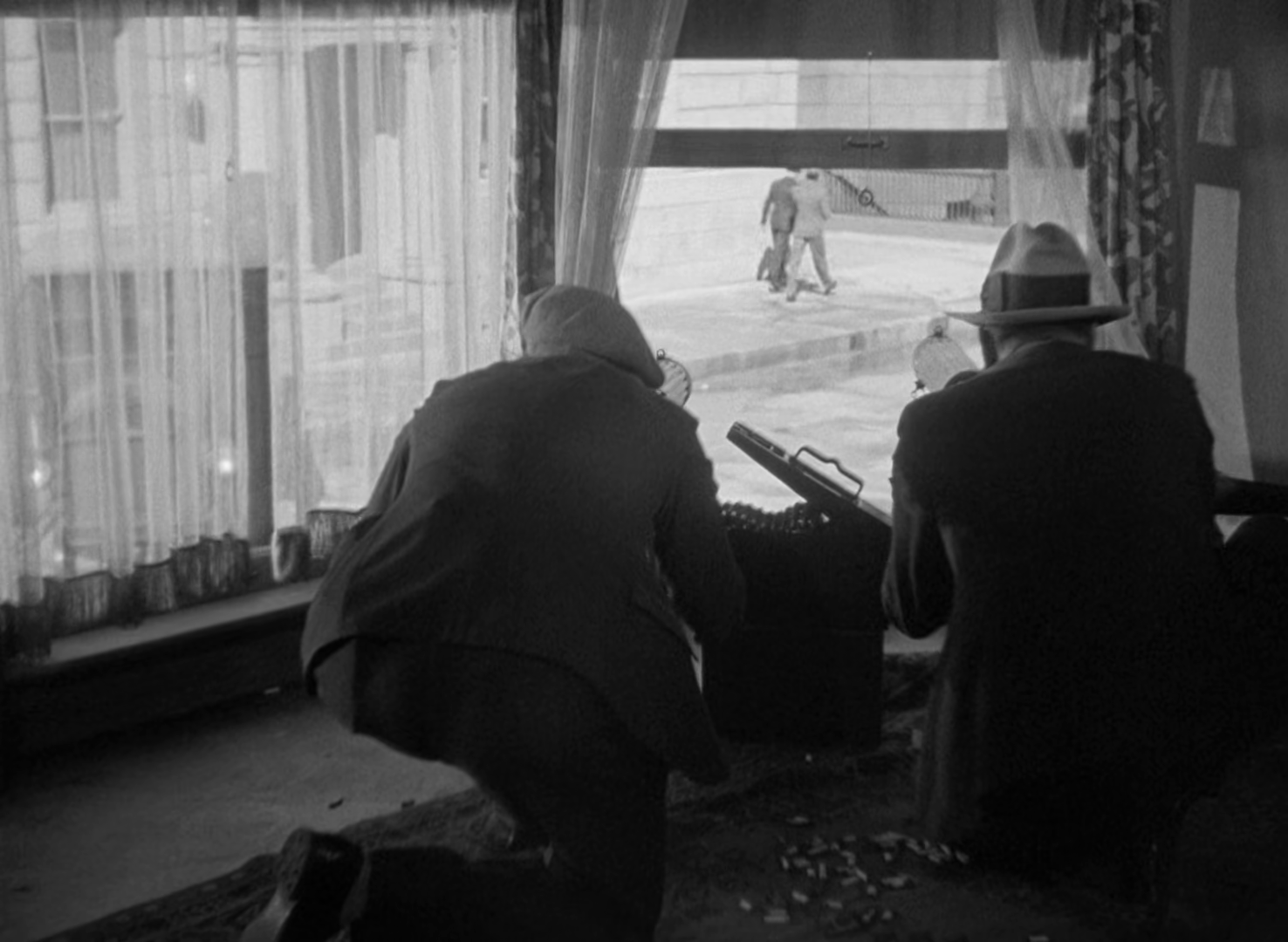
While exiting the safehouse that Paddy Ryan’s gang has been holed up in since a gang war erupted with “Schemer” Burns’ forces, Tom and Matt come under fire from a pair of heavy-duty Vickers machine guns. Matt gets pumped full of lead, but Tom manages to evade death by hiding around the street corner. Before leaving the scene of the crime, the machine guns shred the wall that Tom’s hiding behind (an effect apparently achieved by firing at the brick wall with a live ammunition).
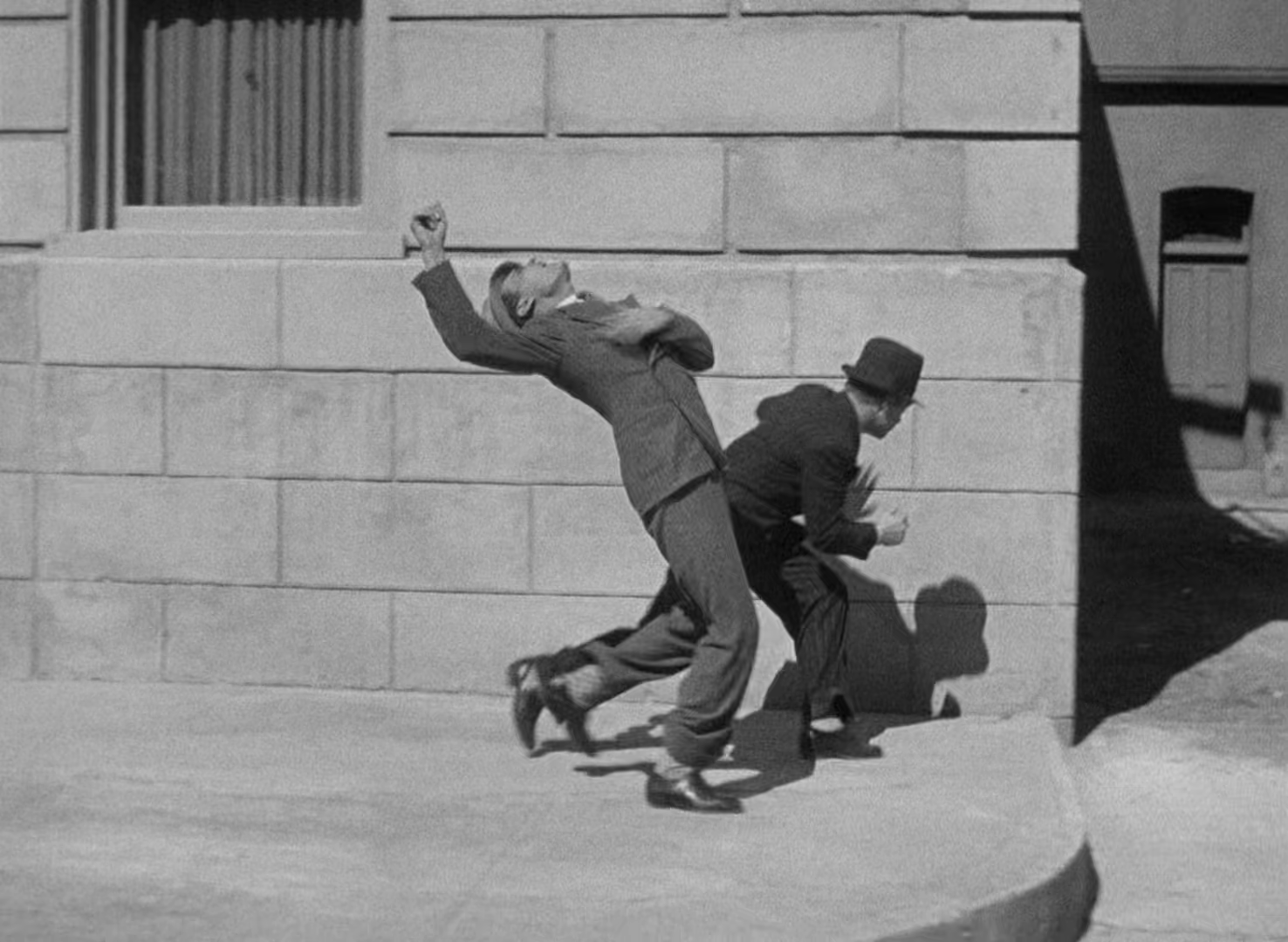
To avenge Matt’s assassination, Tom steals two revolvers from a pawn shop in the coolest way imaginable and then waits in the rain outside “Schemer” Burns’ lair, waiting to make his move. When Burns and his entourage show up, Tom enters the den of sin and an offscreen shootout ensues. Cagney’s character emerges from the storefront, almost shot to pieces, and tosses his two pistols into the windows outside in an act of defiance.
BEST LINE:
As Tom Powers stumbles away from the gunfight at “Schemer” Burns’ place, in the pouring rain with blood oozing down the side of his face, he falls to his knees.
Tom Powers (James Cagney): “I ain’t so tough.”
He then faceplants in the rainswept gutter… somehow still alive.

[THE EXECUTION]
The Public Enemy, along with Little Caesar (1931) and Scarface (1932), was one of the movies that popularized the sound-era gangster film. All three were released during the so-called Pre-Code Era of Hollywood, before the Production Code, which dictated what content could and couldn’t be in American-made motion pictures, was enforced. The mobster movies of the time were reviled by the moral guardians, who feared that they glamorized crime, and their popularity led to the enforcement of the Code.

The thing that always strikes me most about The Public Enemy is how nitty-gritty it is. You can really feel the grit, grime, and slime under your fingernails while watching this masterpiece. This movie is raw. While most gangster flicks focus on the head honchos, this one is all about the common “foot soldier” in the gang wars of Prohibition. It’s an interesting perspective, seeing the rise and fall of your ordinary, everyday enforcer, rather than one of the chiefs. If Scarface (1932) was the Scarface (1983) of its time, then The Public Enemy would be the Goodfellas (1990) of its time.
The acting in The Public Enemy is worth talking about. Being an early talkie, most of the performances are pretty primitive, but James Cagney is another story. He absolutely acts circles around his co-stars, completely lighting up every frame he’s in. It’s one of the best performances of the Pre-Code Era. The other actors have some funny moments where their acting is subpar. Towards the end of the film, Donald Cook is asked how his dinner is and he responds with the most robotic “What?” that I can imagine. It’s awesome.

This is not an action movie. Hell, even calling it “action-adjacent” would be a stretch. However, its impact on the gangster film is immense. Its violence is high-impact, even if a great deal of it is offscreen. The famed Thompson submachine gun makes exactly zero onscreen appearances. Still, The Public Enemy has a mean, ripped-from-the-headlines quality to it that few other mobster movies can compete with.
This flick is only eighty-three minutes long, so it clips along at a very agreeable pace. It packs more memorable content into its package than most other gangster pictures do in their oft-unwieldy runtimes. Most sequences in the work have an “Ooo, I love this part” quality to them. Really, the only scenes that slow down the reckless pacing are the ones involving Gwen Allen (Jean Harlow), who replaces Kitty as Tom’s moll. First, Tom spots her hulking down the street and he stops the car to pick her up. Later, there’s a not-that-interesting scene between the two of them at Gwen’s apartment. At least the movie seems to forget about her as things accelerate to a climax. Gwen who?
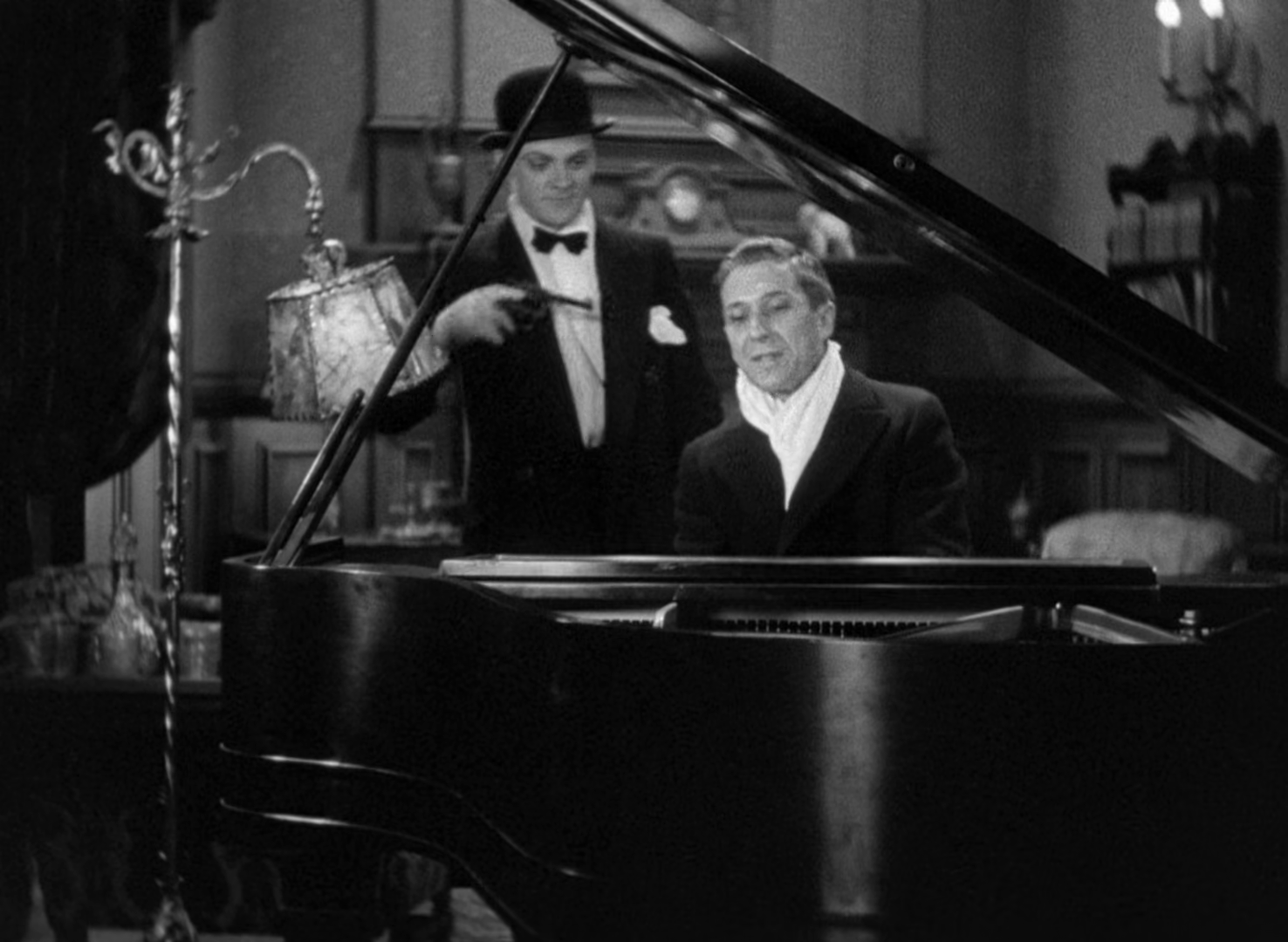
The Public Enemy is simply one of the finest crime-dramas of the 1930s. Stacked up against Scarface (1932), I’d give The Public Enemy a very, very slight edge, even if Scarface has a lot more killing. A nine-outta-ten masterwork, its filmmaking might appear a little crude to today’s eyes, but it’s a gangster movie for the ages, thanks to James Cagney’s game-changing performance and its ultra-gritty, street-tough attitude. Go in with appropriate expectations and you’ll be rewarded.
[THE MORAL OF THE STORY]
“THE END OF TOM POWERS IS THE END OF EVERY HOODLUM. ‘THE PUBLIC ENEMY’ IS NOT A MAN, NOR IS IT A CHARACTER – IT IS A PROBLEM THAT SOONER OR LATER WE, THE PUBLIC, MUST SOLVE.”
[THE AOBG ACTION CHECKLIST]
[ ] Athlete(s) Turned “Actor”
[ ] Clinging To The Outside Of A Moving Vehicle
[X] Crotch Attack*
[ ] Dialogue Telling Us How Bad-Ass The Main Character(s) Is/Are
[X] Ending Featuring An Ambulance, A Blanket, Or A Towel
[X] Factory/Warehouse/Castle
[X] Giant Explosions
[ ] Heavy Artillery
[ ] Improvised Weapon(s)
[ ] Macho Mode(s) Of Transportation
[ ] Main Character Sports Facial Accessory(s)
[ ] Manly Embrace(s)
[ ] Notorious Stunt-Man Sighting
[X] Passage(s) Of Time Via Montage
[X] Politically Fueled Plot Point(s)
[X] Senseless Destruction Of Property
[X] Shoot-Out(s) and/or Sword Fight(s)
[ ] Slow-Motion Finishing Move(s)/Death(s)
[ ] Stupid Authoritative Figures
[X] Substance Usage and/or Abuse
[ ] Torture Sequence(s)
[ ] Unnecessary Sequel
[ ] Vehicle Chase(s)
[X] Vigilante Justice
*Does implied rape count?
[TOTAL: 10 outta 25]
